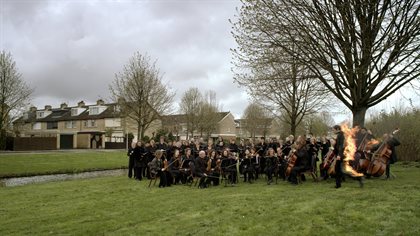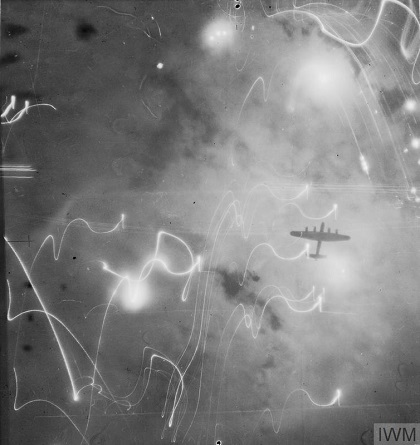Melancholia. A Sebald Variation
An exhibition curated by John-Paul Stonard and Lara Feigel
Exhibition
Inigo Rooms, Somerset House East Wing
21 September – 10 December 2017

Nummer Veertien: Home (video still), Guido van de Werve, 2012
Albrecht Dürer’s 1514 engraving Melencolia I remains one of the foundational images of European art. The winged figure of genius slouches despondently; the hourglass shows time hastening to its end. Five centuries later, this became the mood of that archetypal melancholy European, W G Sebald. There is the rootlessness of exile and displacement in The Emigrants; the disappearance of old Europe in Austerlitz; the ruins of the bombed cities in On the Natural History of Destruction.
Melancholia. A Sebald Variation took the viewer on a Sebaldian journey from the ruins of 1945 to the present day. It began at that ‘zero hour’ after the war when melancholy found its physical form in the rubble scattered throughout its cities after the Second World War and its human form in the refugees who wandered around them.

An Avro Lancaster on the night of 30/31 January 1943. © Crown Copyright: IWM
Tracing its way from the ruins of Britain and Germany to the suburbs of contemporary Holland, the exhibition aimed to provoke reflection about the European condition and about the nature of melancholy itself. Is it, as in Freud’s formulation, an indulgent, unproductive form of mourning? Or can it be, as for Sebald, a form of sadness that is ultimately uplifting because it enables loss to bring with it a consciousness of life and its more startling possibilities?
Alongside Dürer's Melencolia I this exhibition displayed works from a wide range of international artists, including Dexter Dalwood, Tacita Dean, Susan Hiller, Tess Jaray, Anselm Kiefer, George Shaw, Guido van der Werve, and Jeremy Wood, as well as archival materials and a film of Sebald in discussion with Susan Sontag.
Events
John Banville and Brian Dillon in conversation with Lara Feigel
Wednesday 8 November 2017
The Great Hall, Strand Campus
Is melancholy, as Freud thought, an indulgent, unproductive form of mourning? Or can it be a form of sadness that is ultimately uplifting for the consciousness it brings of life and its more startling possibilities? Here John Banville and Brian Dillon, both melancholic writers with an interest in W.G. Sebald, used the exhibition as a springboard to reflect on the theme of melancholia.
Guido van der Werve in conversation with John-Paul Stonard
Monday 13 November 2017
Screening room, Somerset House, Strand
The Dutch artist Guido Van der Werve makes films based on his personal interests, including extreme sports. For Nummer Vierteen: Home, exhibited in the Melancholia. A Sebald Variation exhibition, he completed an epic 1000-mile triathlon between the Church of the Holy Cross in Warsaw, where Chopin's heart is preserved, and the cemetery of Père Lachaise in Paris, where the composer's body was laid to rest. Here Van der Werve discussed this film and his other more recent work, alongside a screening.
Melancholia. A Sebald Variation was exhibited in collaboration with the Centre for Contemporary Culture in Barcelona (CCCB) who presented some of these works in their 2015 exhibition Sebald Variations curated by Jorge Carrión and Pablo Helguera.
Melancholia. A Sebald Variation was presented by the Department of English, the Centre for Modern Literature and Culture. It was supported by the European Research Council and the university's Culture team.
